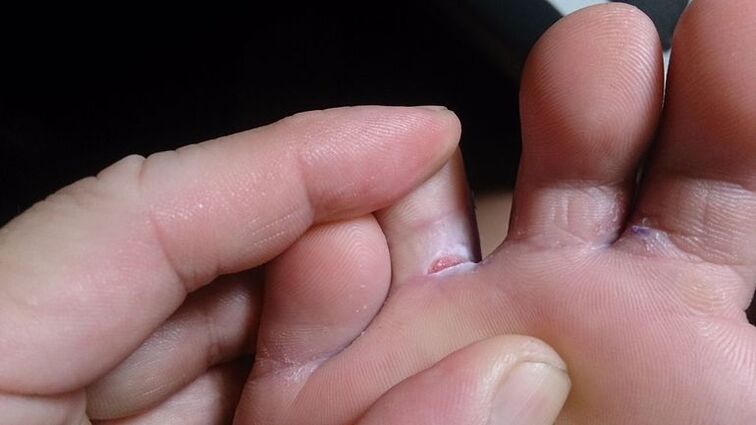
Mycosis are a group of diseases caused by pathogenic mushrooms.The areas of the skin affected by these microorganisms are called dermatomicosis.Sometimes they are combined with onychomycosis, a nail disease.Knowing what the foot mushroom to, you can treat the disease in a timely manner and prevent complications.There are several options for the course of this pathology.
Foot infection mechanism
There are factors that directly influence the possibility of contracting a mushroom.In addition, much in this regard depends on the state of the immune system.When the body's defenses are reduced, the probability of developing mycosis increases significantly.Immunity can be weakened by chronic infectious diseases and pathologies of the endocrine system.You can be infected with the mushroom directly or indirectly.In the first case this takes place through:
- layers of land;
- various plants;
- contact with an infected person or animal.
The indirect route involves the use of hygiene items and other things that the patient actively uses.
Mushrooms of the candid genre live on the surface of the epidermis.When the composition of the secretion of the sweat glands changes, a nutritional means for the development of microorganisms is formed.The representatives of the Candida group acquire pathogenic properties.This means that they can easily cause diseases.
Classification of mycosis
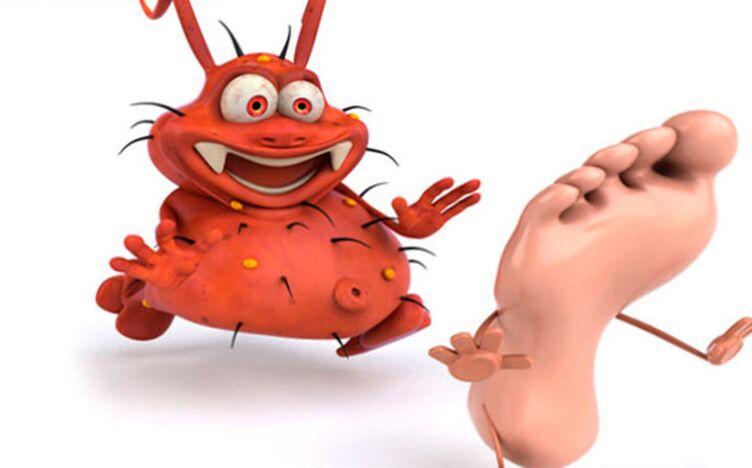
With epidermophytosis, skin and nails are interested.You can be infected with this disease in public places: in gyms, saunas.Through which objects the pathogen is often transmitted:
- towels;
- Washcloths;
- oil canvas;
- mats.
Men in adulthood suffer from epidermophytia more often.A favorable factor for the development of the disease is an increase in sweating.
Tricophitosis can be caused by various types of mushrooms by a group of Tricofiton.The disease is considered very contagious.It is transmitted through the shoes wearing an infected subject, washing canvas, towels and other bathroom accessories.More often the pathology is found in children.About 17% is the prevalence in teenagers.Young people usually suffer.Among adulthood men, the incidence is even greater.At risk are the employees of seminars, bathrooms, showers, athletes, miners.
The candidiasis of the stop, compared to the epidermophytia, is less common.Most mushrooms of the candid genre belong to the group of conditionally pathogenic.This means that these microorganisms are present on the human epidermis in the norm.They obtain pathogenic properties after a decrease in immunity.
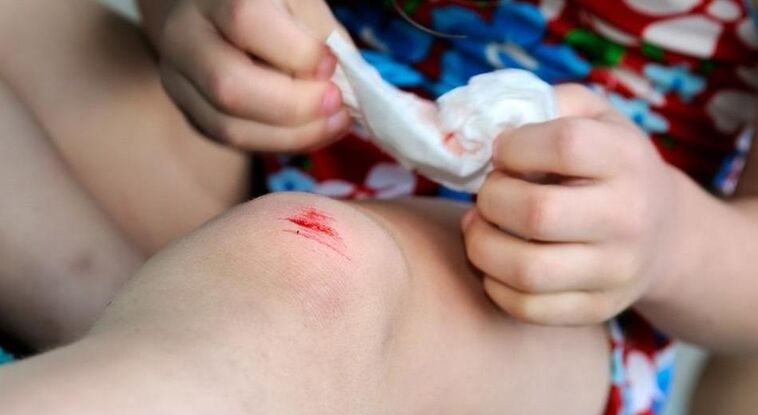
In order for the candid mushrooms to enter the body, simply use objects belonging to the patient.These microorganisms are often present in food products such as meat, milk and dairy products.The risk of infection increases in the presence of these factors:
- skin lesions due to exposure to chemical, alkal and acid components;
- maceration, sweating of the skin;
- The presence of the mushroom in the air in large quantities.
Symptoms of the disease
By nature of the course, rubed and epidermophitosis are similar.For this reason, experts combine them in a category - Mikoza Stop.It stands out by scaly, Dyshidrotic and interstalous of its forms.A separate group is onyicomicosis, which can be:
- atrophic;
- normotrophic;
- hypertrophic.
With myshidrotic mycosis, the work of the sweat glands is inhibited.The mushroom on the fingers with an interstalic shape looks like a diaper.Although this division must often be considered conditional, since various variations of the disease are combined.
Squamous and dyshidrotic
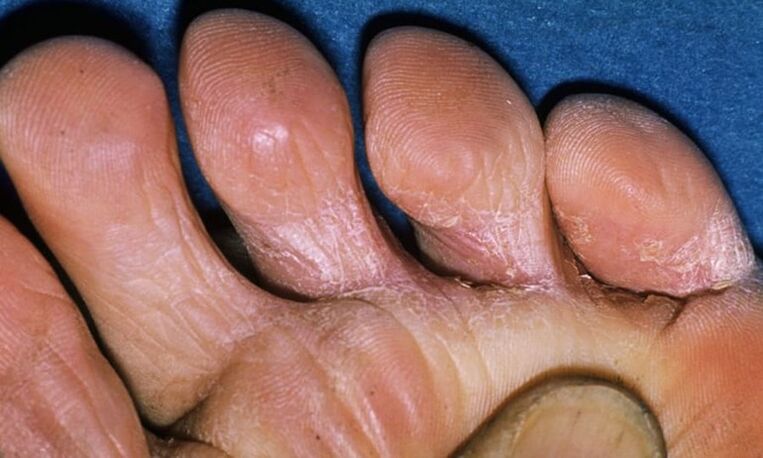
Initially, the squamous form of the mushroom affects one side.So go on the contrary.The redness areas are formed on the skin, which gradually begin to detach themselves.The individual patients complain about the itching.The damage area can be large and small, depending on the patient's body.There are people who suffer from this form of mycosis of the feet, but nothing disturbs them.
The mushroom on the skin of the legs with a Dyshidrotic shape seems peculiar: the bubbles are formed with a diameter from 2 to 8 mm in large quantities on the foot of the foot.Gradually, they begin to merge into larger formations and then burst.In their place, ulcerative skin lesions are formed.Sometimes the process passes to the internal and external lateral surface.The bubbles are open and in their place you can see areas of rash with erosion.
The mushroom on the legs also manifests itself in itching and pain.Erosion is in the future dry and healing, and peeling is formed in their place.The fungal infection can be complicated by bacteria.In this case, the liquid located inside the bubbles becomes cloudy.The skin on the feet swells, blushes.A dyshidrotic shape is characterized by a long flow.The periods of remission alternate with exacerbations.Usually, the mushroom with this shape affects only one foot.
Intriginal form
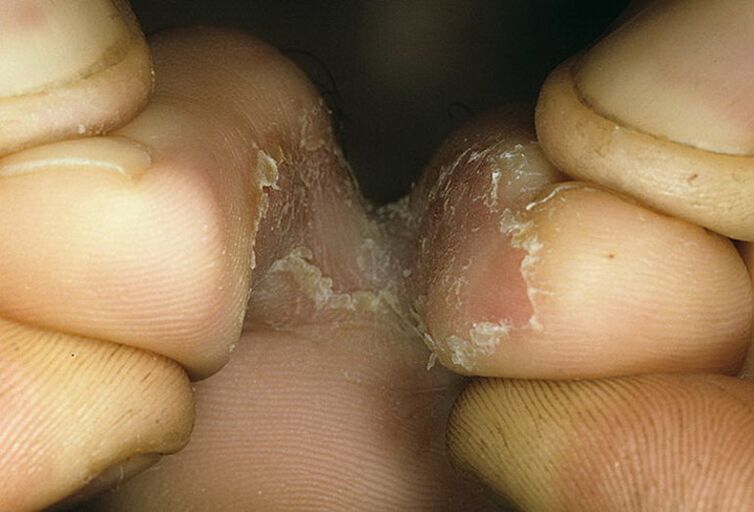
It has become very widespread and presents itself independently.Less commonly, this form develops against the background of squamous mycosis.The process affects the area between the 4th and the 5th toes of the foot.The key symptom is the appearance of cracks on an epidermis with a whitish edge.The surface layers of the skin are exfoliate.Among the fingers, a weakening is formed.The patient complains of burning and itching.In the areas of the lesions, painful enough for the touch of the form of erosion.
The intrigued form is chronic in most cases, it has a long flow.The condition improves in the cold season and worsens in the summer.In patients with this form, the skin is loosened over time.Its protective functions are reduced.This creates a favorable base for streptococcus infection.On the epidermis, abscesses are formed, which are surrounded by sections of swelling and redness.
Types of onychomycosis
This disease leads to damage to the nails on the fingers.The pathogen at the first attack the free edges of the plate.Here strips and spots of a yellow shade are formed.Different forms of onychomicosis are distinguished:
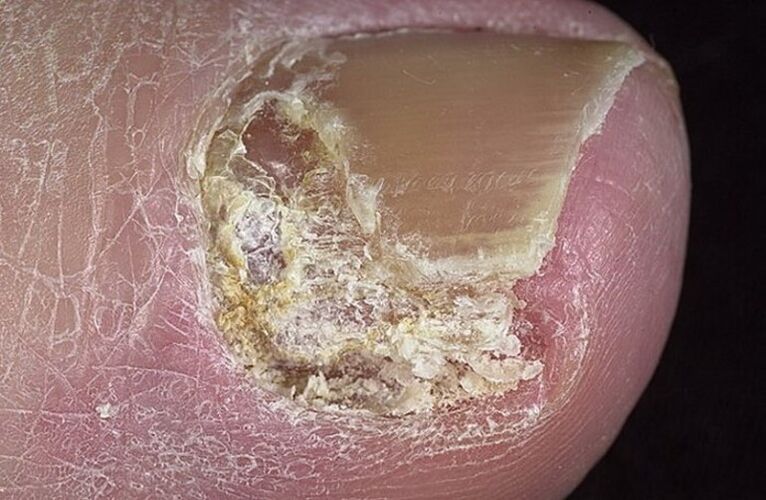
- Hypertrophic.The nail becomes yellow, its thickness increases.It crumbles and the skin under it peel and thickens.
- Atrophic.The opposite situation is observed here, when the nail becomes thin and is destroyed.The skin under it is covered by a keratinized layer.
- Caused by molds.It is formed against the background of other types of nail disease.The dish can be green, yellow, brown and sometimes even black.Parony is formed in the permanent space - purulent inflammation.
In 70% of cases, the onychomycosis affects 3, 4 and 5 fingers on the legs.In 30% of cases, 1 and 4 fingers suffer.Quite often, there is a able -botrophical form of the disease when yellow spots on the nail are present, but its integrity is not violated.
Mushroom treatment
There are various treatment patterns for the disease selected individually by a doctor.
Further treatment methods include intake of immunostimulants and vitamins.They help to strengthen immunity.If a bacterial infection has been combined, antibiotics are prescribed.Sometimes the occurrence of a fungal infection is favored by the underlying disease.Must be treated first.We are talking about dermatological pathologies and chronic infections.Antistamines are recommended in the presence of an allergic component.
Traditional medicine
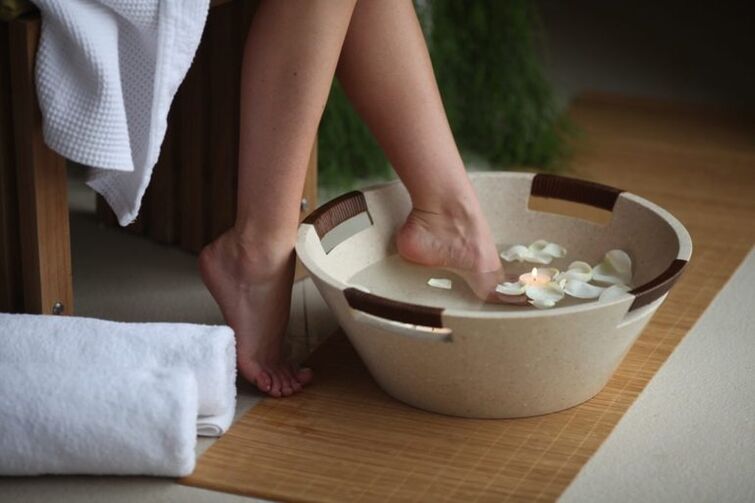
Mycosis do not represent a significant danger to health.But their presence helps to reduce immunity, acts as in the center of inflammation.Only antifungal therapy that uses specialized drugs helps to get rid of such a problem.In the early stages, the use of popular recipes is allowed, which are completed by basic therapy.Which methods can be practiced:
- Reception of bathrooms;
- processing of the areas concerned with decoctions of medicinal herbs;
- Application of ointment.
For the bathrooms, you can take the wine vinegar, as it has an antiseptic effect.First you have to wash your legs with hot water and dry them.Therefore, the wine vinegar is poured into the water in a ratio of 1 to 2 and the legs are lowered in it.They keep them there for 5 minutes, after which they put the socks for the night and go to bed.
Another version of the bathroom involves the use of soda and salt.Take a spoonful of ingredients and dissolve in the water.Subsequently, lower your legs in the solution, keep no more than 15 minutes.At the end of the procedure, the legs are washed with hot water.
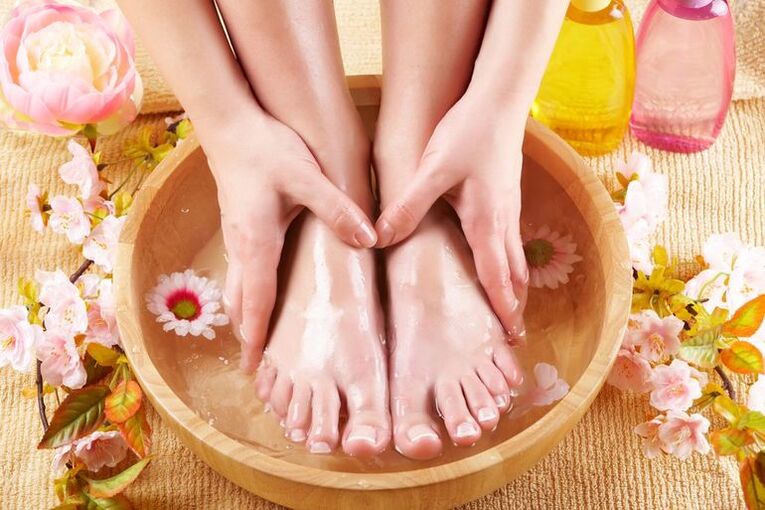
To treat legs with therapeutic decoctions, you can use the drug verbena and calendula inflorescences.In addition, oak bark, dried blackberry berries have a good antiseptic effect.The selected components are mixed in the same quantity.3 tbsp.the.And pour a glass of water.Put on a small fire for 15 minutes.Filter and moisten the decoction lesion with the resulting decoction.Also, this tool can be used for lotions.
To prepare a healing ointment, they mix in the same amount of pork fat and sifted wooden ash.The resulting ointment should be dense and have a homogeneous consistency.It is applied for clean and dry legs twice a day: in the morning and in the evening.



























